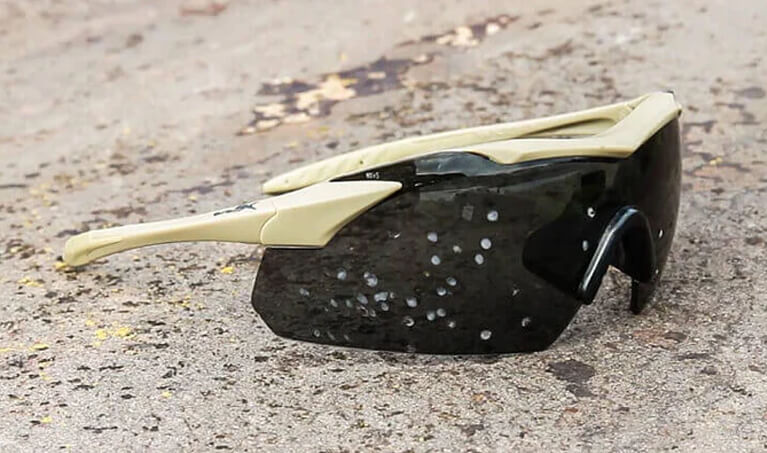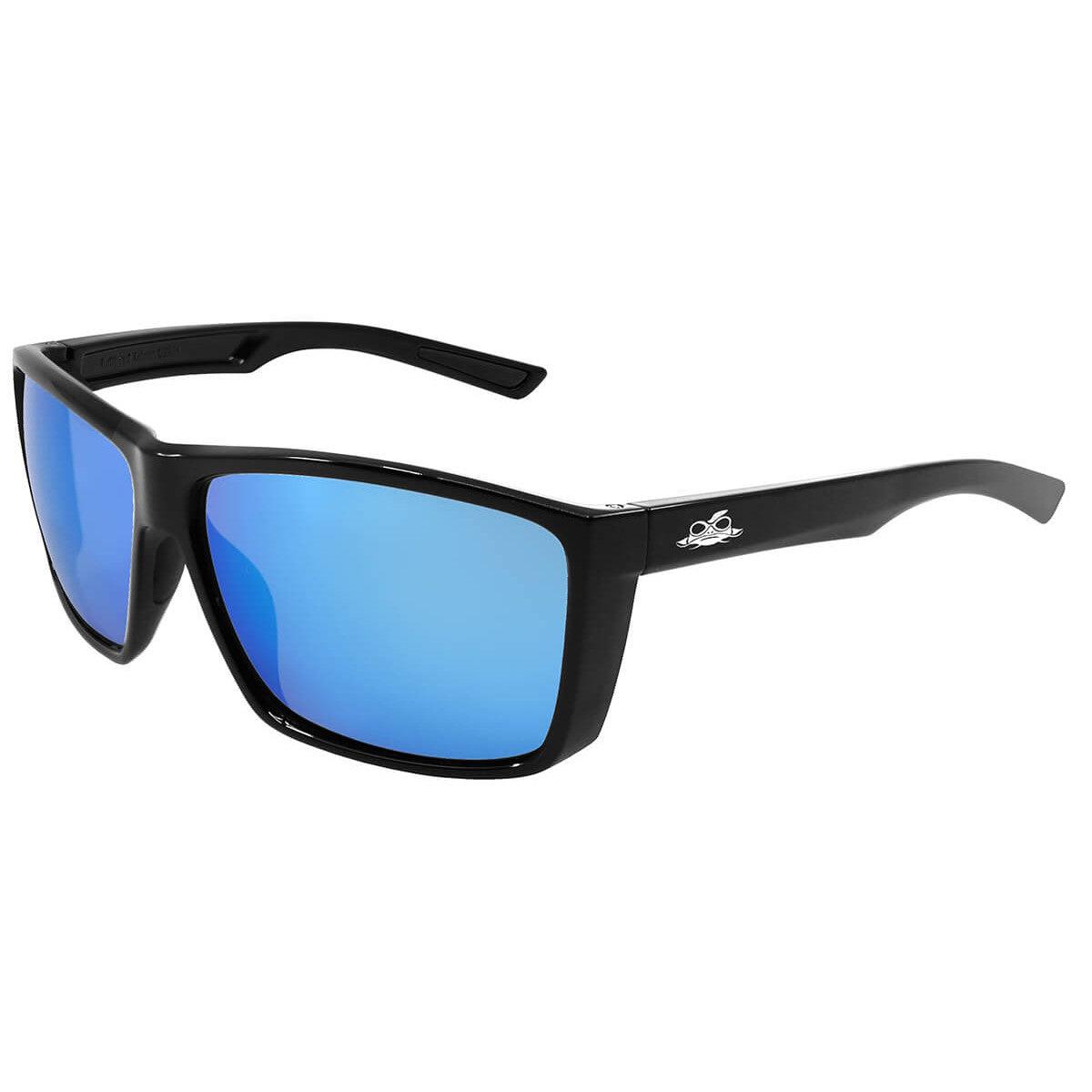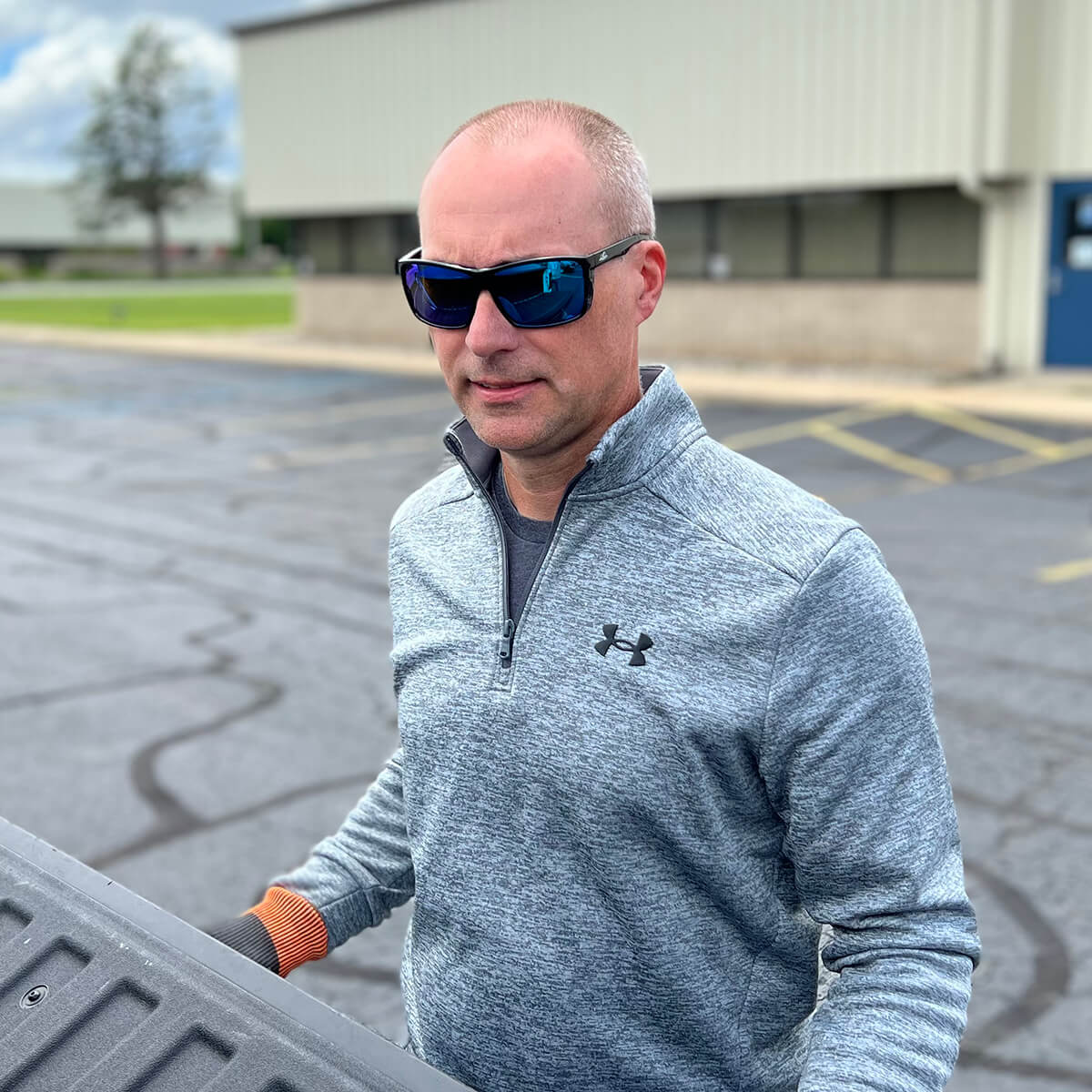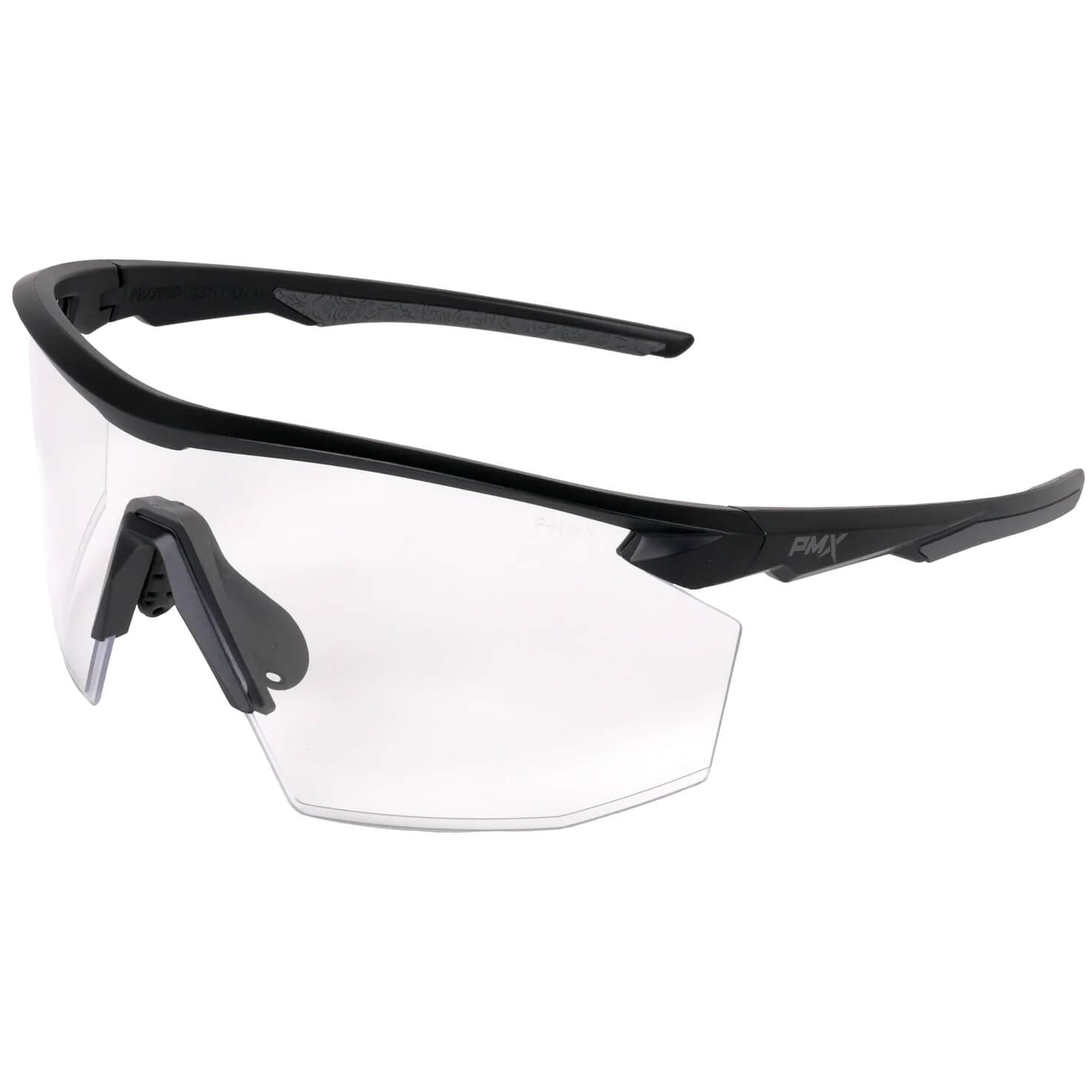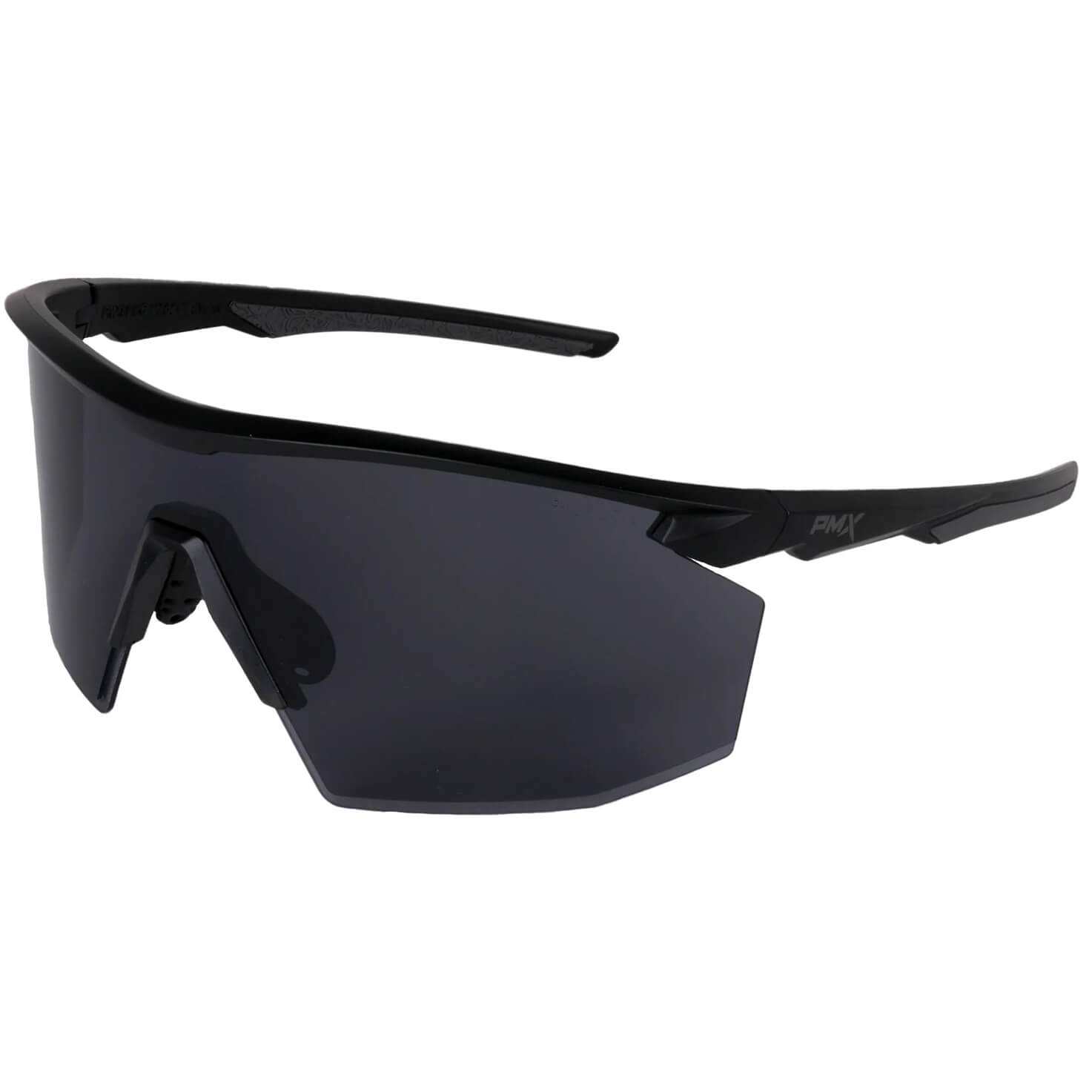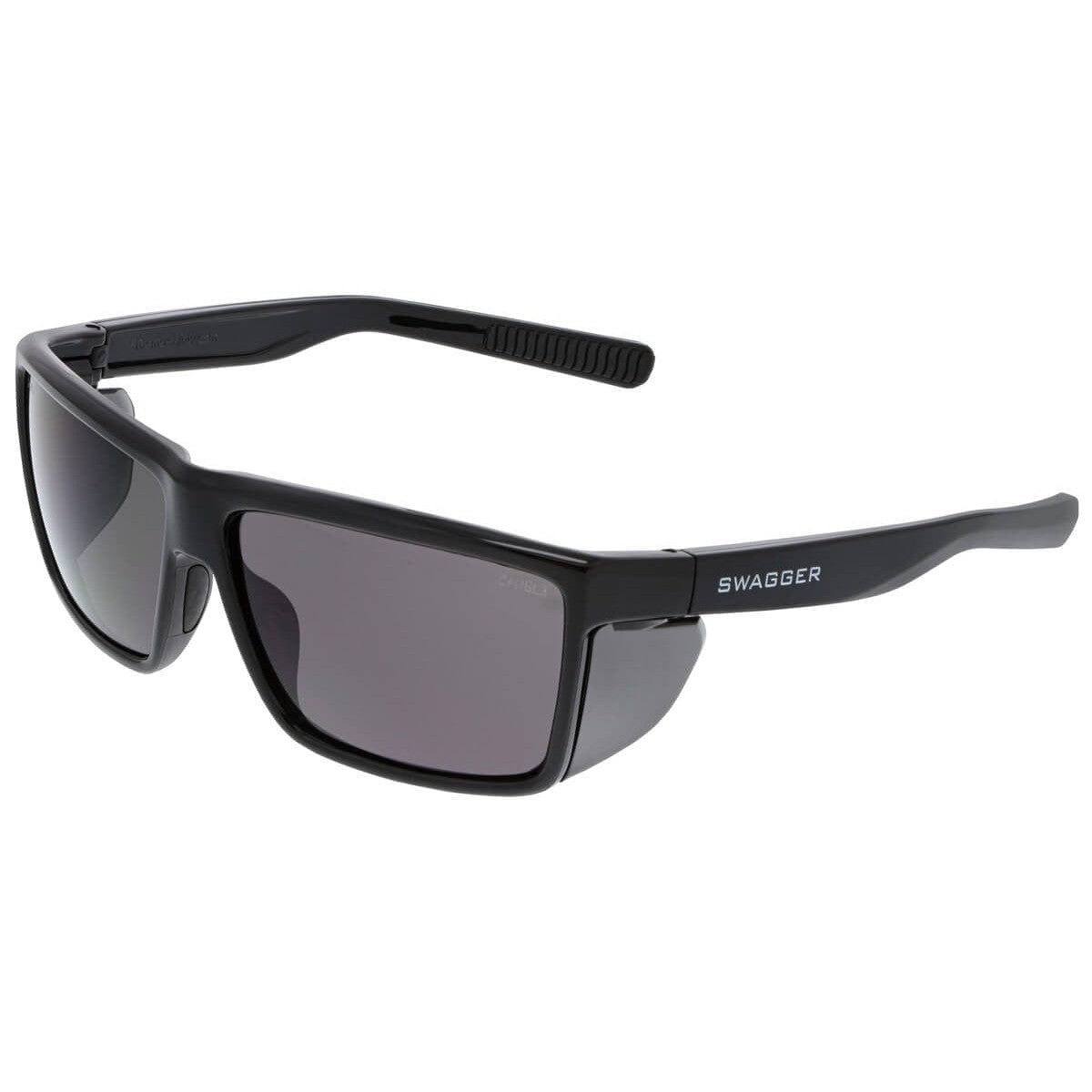Ballistic-rated eye protection has become a mainstay of today's armed forces. But, the use of tactical eyewear has also trickled down into many non-military applications.
What is ballistic & tactical eyewear? How does it differ from other eyewear?
The word "ballistic" means a free-moving object, such as a missile or cannon, fired from a fixed site. The term "tactical" refers to the activity supporting military operations, such as intelligence gathering or combat. Ballistic and tactical eyewear protect wearers from the dangers of these and similar situations.
Ballistic and tactical eyewear is designed to provide additional impact protection in harsh military environments, such as the Middle East, with its intense heat and frequent dust storms. Moreover, it does so at military-grade standards beyond those for industrial-rated safety eye protection.
Ballistic Eyewear like the ESS Crossbow provides protection from extreme impact hazards found on the battlefield.
While ballistic-rated safety glasses and sunglasses make up a large segment of protective eyewear inside and outside the military, there can still be confusion over what actually classifies eyewear as ballistic-rated. Ballistic and tactical are words often used interchangeably in casual conversation. Still, not all ballistic eyewear is necessarily intended for tactical use, and not all tactical eyewear is ballistic-rated (though it should be).
Rigorous Ballistic Testing
The U.S. Military issued rigorous ballistic tests that protective eyewear worn by military personnel have to pass. These tests are conducted in a field environment that involves subjecting eyewear to projectiles at over four times the velocity of standard ANSI Z87.1 testing, the standard for industrial safety eyewear.
For example, ANSI (American National Standards Institute) tests projectiles at 150 fps (feet per second). While the military requires testing with projectiles traveling at 650 (+/- 10) fps for spectacles and 550 fps for goggles.

Smith Elite Eyewear provided this chart to show the differences between ANSI Z87.1 and the Military Ballistic Standards.
According to the Vision Conservation and Readiness Division through the Army Public Health Center, in addition to impact safety requirements, the Armed Forces also want eyewear to be…
- Functional
- Reasonably comfortable
- Free from bright colors & distracting designs
- Able to be disinfected
The MCEP (Military Combat Eye Protection) Program created by the Army's PEO Soldier (Program Executive Office) Soldier authority outlines the military's stringent standards for protective eyewear. The two essential Military Ballistic Standards used for testing are MIL-PRF-31013 (spectacles) and MIL-DTL-43511D (goggles).
What are MCEP and APEL?
PEO Soldier says MCEP...
“...helps ensure Soldiers are visually able to carry out their mission. Eye hazards exist in a variety of forms in both combat and training environments. They range from fragmenting munitions and other airborne debris, to invisible hazards such as ultraviolet (UV) radiation. If unprotected, the Soldier is susceptible to short- or long-term effects on their vision. This can compromise current and future mission effectiveness. MCEP helps preserve performance in both combat and training by reducing the risks associated with exposure to such hazards.”
Oakley SI eyewear, like the Ballistic M Frame 3.0, fits under communication headsets used by modern soldiers.
For more information on MCEP Standards, see the Military Combat Eye Protection (MCEP) and the Authorized Protective Eyewear List (APEL). Note that in the European military, standards are set up a bit differently, with the European EN166 standard identifying four levels of ballistic protection.
APEL
Protective eyewear approved to be worn by U.S. military personnel must bear the APEL (Authorized Protective Eyewear List) logo or be listed on the official APEL website. This is the single-best way to know if your eyewear is approved for official military use.
The U.S. military insists that personnel only wear APEL-approved eye protection. This is not to just have another regulation. Instead, it is because there is a significant need for a protection standard beyond what typically works for the civilian population.
Remember that ballistic-rated civilian eyewear does not require and, in most instances, will not bear the APEL logo. However, most manufacturers will state in their product descriptions that their ballistic-rated eyewear meets MIL-PRF-31013 and MIL-DTL-43511D standards.
How great is the need for ballistic and tactical eyewear in the military?
The Official Homepage of the United States Army illustrated in Eye doctors teach combat trauma management the tremendous need for ballistic and tactical eyewear protection for individuals in the armed forces.
- Combat ocular trauma has stabilized due to widely implemented eye protection in the military.
- Most combat eye injuries are due to explosions from high-energy projectiles and improvised explosive devices rather than gunshots or explosions.
- Combat ocular trauma is more complicated and likely to involve more than one body system than civilian ocular trauma.

Ballistic-rated military eyewear is intended to protect the wearer from high-velocity projectiles such as shrapnel.
Importance of Prevention
Congress Budgets $10M for Eye-Injury Research provides the following Defense Department statistics that strengthen the need for ballistic-rated eyewear.
- About 15% of injuries from battlefield trauma are to the eyes.
- In the Afghanistan and Iraq wars, Military personnel suffered more than 200,000 eye-related injuries.
- About 75% of military personnel suffering traumatic brain injury also have eyesight problems.
- Approximately 70% of our total sensory awareness comes from sight, making vision the most critical of the five senses, especially in combat.
These statistics show the necessity of funding by Congress and stress the importance of research for treating eye injuries. The data also emphasize the importance of prevention through ballistic and tactical eyewear.
Need More Resources?
The need for ballistic and tactical eye protection extends well beyond military application and into many areas of civilian life. For more details on ballistic-rated eyewear both in the military and outside of it, check out these posts:

